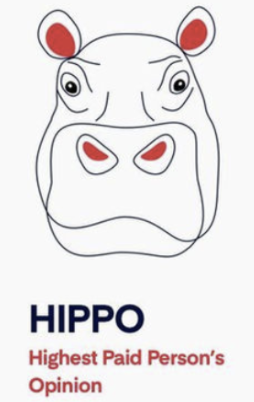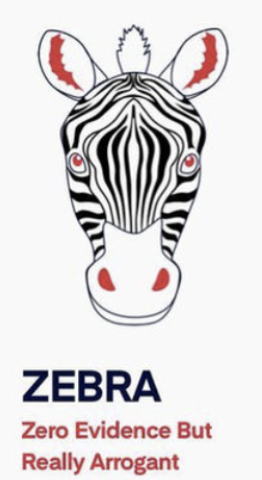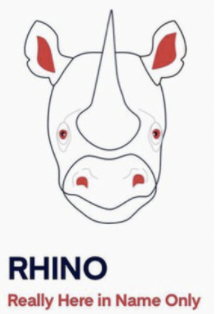We've all had challenges with various stakeholders coming to us with a whole bunch of different information and wanting a whole bunch of different things. Who do I listen to? What’s most important? Why do I feel like I’m in a zoo? Some of the most notorious stakeholder animals in the zoo are the HiPPO, the ZEBRA, the WOLF, and the RHINO.
The HiPPO stands for “Highest Paid Person's Opinion” and this is normally the case when a VP or C level executive comes into a Sprint review and says that we need this, and everybody goes “oh I'll just listen to you because you have VP behind your name.”
The ZEBRA is shown by the individual that comes and says, “I'm absolutely sure this is a really really good idea to do.” ZEBRA stands for Zero Evidence But Really Arrogant.
The WOLF: WOLF stands for Working On Latest Fire. Normally this is evidenced by somebody that comes into a Sprint Review or comes to you as a Product Owner and says, “Oh my gosh we need to fix this right now or the application is going to completely fail.”
The RHINO stands for Really Here in Name Only. This is somebody that's just cashing it in and just doing the bare minimum to get by. They may show up to meetings physically, but mentally they're not there and they don't have anything invested in the success of the product.

Many thanks to the team at Product Board for the fun visual.
So, you can say, “wow there's a whole lot of different people here how is EBM possibly going to help with all of these issues?”
Before we get into that let's talk about what EBM is. EBM stands for Evidence-Based Management which is very different from our normal way of operating. Our normal mode of operating is making decisions based on gut feeling, opinions, or focusing on the latest squeaky wheel. Evidence-Based Management is comprised of three main things: goals, evidence (in the form of measures), and an empirical cycle. By leveraging all of these pieces together we can have an understanding of where it is we're trying to go, know that we're on the right path or we need to change direction, and then constantly be revisiting these things as we learn more information to adjust and adapt our path.
With that being said how can Evidence-Based Management help us with these four various animals?

Let's start with the HiPPO. The HiPPO is the Highest Paid Person's Opinion. When we look at the HiPPO what they're normally doing is relying on their position to influence people in a certain direction. Notice that it says opinion (everybody has one). What evidence-based management allows us to do is transition that from opinions to facts. So, as we’re learning and getting more information, we’re able to leverage those facts to tell us what we want to invest in next based on the evidence that we have before us. This allows us to look at true data for the investment we are making with small steps, true valid feedback, and therefore disarm the HiPPO.

For the ZEBRA this person normally comes in and has an idea of what they want to do, and they are very strongly leaning in a certain direction. They have Zero Evidence for that direction, But they are Really Arrogant. They just “know” based on “instinct” that what they're proposing is the absolute best thing to do for the organization. What Evidence-Based Management allows us to do is focus on actually getting evidence and reducing where that arrogance comes into play. So instead of it being an arrogance play, we are able to objectively look at the facts and the data that we've learned on our way to achieving a goal.

The WOLF: Working On Latest Fire. How can Evidence-Based Management help us with this? I think there's two ways that Evidence-Based Management helps us with this: one is having a crystal-clear understanding of the goals that we're going after. By having really clear goals, and knowing what is truly most important for our organization, we can say no to the WOLF with the “fires” that happen to come up. We also need to look at the KVAs: the Key Value Areas that are talked about in Evidence-Based Management. By balancing these four areas we can look at ability to innovate or time to market. Those are really important for us to look at because they help balance long-term sustainability along with our desire to provide valuable products now. Too often organizations will be pursuing current value at the expense of things like technical debt or other things that get in the way, that later impact our ability to actually deliver value. So by looking at these two things Evidence-Based Management can help us be proactive and prevent fires, stopping the WOLF in its tracks.
 The RHINO. How does the RHINO get impacted by Evidence-Based Management? With Evidence-Based Management what we're doing is focusing on goals. Too often when we have somebody that's Really Here In Name Only what it is, is a lack of motivation, lack of engagement, or a lack of drive for actually accomplishing something meaningful within the organization. Most humans do not have the will or the desire to not do something purposeful. Where Evidence-Based Management can help is to paint a clear direction of what it is that we're trying to accomplish by having clear goals and a trusting environment in which people can succeed. That's going to make it more likely that people are willing to show up and put their hearts and minds into the work that they're doing. Looking at the rest of the KVAs we can also keep in mind what's the environment like? Are there things that we can be doing to help increase employee satisfaction? Often that’s something that gets cut at the expense of shareholder satisfaction or customer satisfaction. But as we all know if we don't have happy employees, we're not going to succeed in the long term with customer satisfaction. So looking at goals and balancing long-term sustainability for our business and our employees can allow the RHINO to show up with their heart and mind.
The RHINO. How does the RHINO get impacted by Evidence-Based Management? With Evidence-Based Management what we're doing is focusing on goals. Too often when we have somebody that's Really Here In Name Only what it is, is a lack of motivation, lack of engagement, or a lack of drive for actually accomplishing something meaningful within the organization. Most humans do not have the will or the desire to not do something purposeful. Where Evidence-Based Management can help is to paint a clear direction of what it is that we're trying to accomplish by having clear goals and a trusting environment in which people can succeed. That's going to make it more likely that people are willing to show up and put their hearts and minds into the work that they're doing. Looking at the rest of the KVAs we can also keep in mind what's the environment like? Are there things that we can be doing to help increase employee satisfaction? Often that’s something that gets cut at the expense of shareholder satisfaction or customer satisfaction. But as we all know if we don't have happy employees, we're not going to succeed in the long term with customer satisfaction. So looking at goals and balancing long-term sustainability for our business and our employees can allow the RHINO to show up with their heart and mind.
Looking at these ways that we can tame these animals, Evidence-Based Management can significantly help us get to a more meaningful work environment where we don't have to deal with the animals that we would find at the zoo and instead we can focus on being a long term, sustaining organization. Otherwise known as the GOAT (Greatest Of All Time).

If you found this blog helpful, see below for ways to connect and learn more:
Check out our upcoming classes!
Want to chat? Reach out to info@unstuckagile.com so we can help you get Unstuck or Subscribe to our Newsletter.
Also, subscribe to our YouTube channel or connect with us on LinkedIn.

